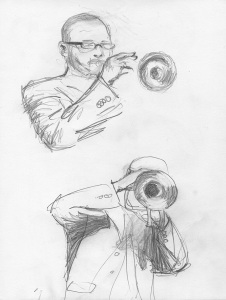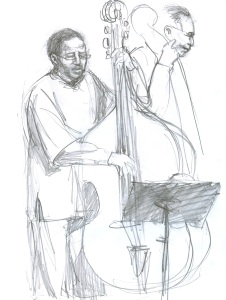Medical debt is the cause of 62 percent of bankruptcies, say organizers of Strike Debt, which threw last night’s offbeat fundraiser for their new “Rolling Jubilee.” Ordinary people donated enough money to collectively buy an estimated $5.9 million in bad debt in order to cancel it.

Revelers at the Rolling Jubilee telethon throw glitter after hearing that the group had raised enough money to buy $5 million in medical debt. Photo by Stacy Lanyon
On the first anniversary of Occupy Wall Street’s eviction from Zuccotti Park, celebrity and local performers donated their time for a “post-modern variety show” last night at Manhattan’s Le Poisson Rouge nightclub. They were there to raise money for what may be the most far-reaching project to grow out of the Occupy movement so far: a “bailout for the 99 percent” called Rolling Jubilee. Launched by Strike Debt, an offshoot of OWS, the Jubilee has begun erasing people’s medical debt by infiltrating the debt-collection industry.
Their tactic is to buy private debt the same way collection companies do—on the debt market, at tiny fractions of its original worth—and then cancel it in hopes of freeing debtors from their piled-up, defaulted medical bills. Organizers also want the action to bring debt servitude to the forefront of our national conversation.
Last night’s live-streamed spectacle, billed as the People’s Bailout Telethon, featured comedienne Janeane Garofalo, musicians Lee Ranaldo of Sonic Youth and Jeff Mangum of Neutral Milk Hotel, and a three-hour-long vaudevillian line-up of mariachi and magic, gospel and hip-hop, striptease and performance art. Comedy writer Lizz Winstead and cartoonist David Rees emceed the event, badgering a fluctuating online audience to donate money. With local Strike Debt chapters holding viewing parties across the country, there may have been close to 2,000 online viewers.
The event had been planned as a launch party for Rolling Jubilee, which opened its bank account on Friday, November 9. But as donations surged past the $250,000 mark—five times Strike Debt’s stated goal for the evening—the soirée took on the bubbly energy of a victory rally.






